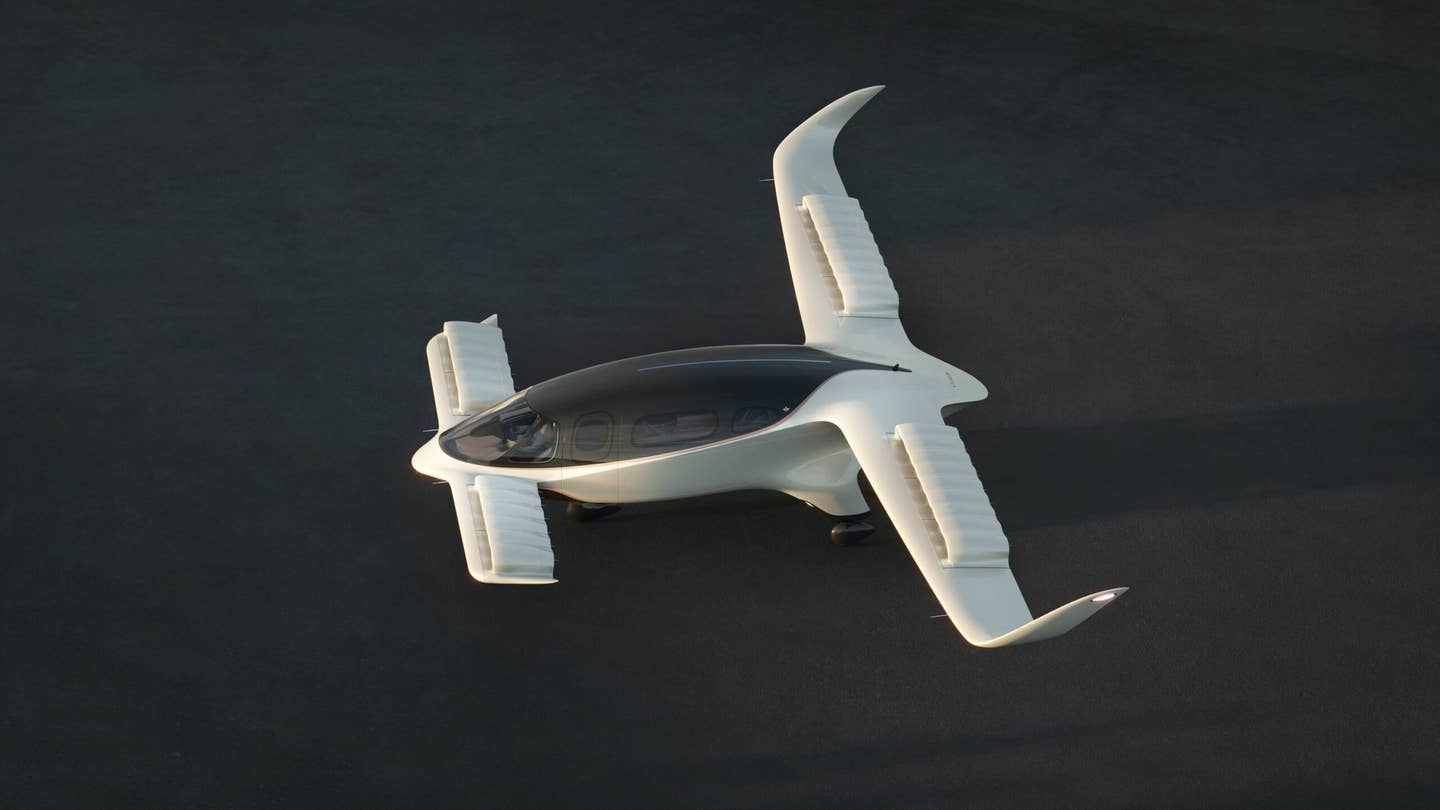Honeywell AAM Business Racks Up $10B Worth of Contracts
Known more for its work with traditional aviation manufacturers and airlines, Honeywell is also heavily invested in the advanced air mobility space—and vice versa.

The seven-seat Lilium Jet is one of several eVTOL aircraft integrated with Honeywell technology and systems. [Courtesy: Lilium]
Advanced air mobility (AAM) is already a multibillion-dollar business. It certainly is for Honeywell, as the company reported at the Dubai Airshow in the United Arab Emirates.
The aerospace and defense manufacturer on Sunday said its AAM business unit has now won contracts worth more than $10 billion, just three years after it was launched. That figure represents Honeywell’s estimate of the contracts’ lifetime value, which the company based on an internal forecast of the number of AAM vehicles it expects to be built.
Honeywell is best known for its work with traditional aviation and aerospace players like Airbus or Dassault. But its AAM segment also collaborates with a variety of partners to address challenges such as automation, aircraft performance, industry regulations, and public acceptance for AAM passenger aircraft (such as electric air taxis), large uncrewed aircraft, and small drones. So far, the unit spans North America, western Europe, and India.
“This milestone is not just about reaching a certain number. It’s a testament to the unwavering vision we hold for the future of aviation and AAM,” said David Shilliday, vice president and general manager of AAM for Honeywell Aerospace. “We are committed to transforming travel and delivery services. Imagine a world where a 100-mile journey takes 45 minutes or less, and same-day package delivery is possible in every populated region of the world.”
To help AAM manufacturers turn that vision into reality, Honeywell produces an array of avionics and propulsion technologies, which it refers to as the “brains, muscles, and senses” of the aircraft.
The company’s Anthem avionics tech, for example, can serve as the “brain” for cockpit operations. Its fly-by-wire and actuation systems function as “muscles,” directly affecting the aircraft’s maneuvering. And fittingly, its range of sensors comprise the “senses,” giving the aircraft awareness of its environment.
Already, Honeywell AAM has partnered with several players in the electric air taxi space. U.K.-based Vertical Aerospace was its first electric vertical takeoff and landing (eVTOL) partner, selecting the company’s fly-by-wire avionics to integrate into its VA-X4 air taxi.
Honeywell actuators and climate system technology will appear on another eVTOL design, Archer Aviation’s Midnight. Pipistrel, meanwhile, selected the firm’s compact SatCom system for its heavy-duty Nuuva V300 cargo drone.
A third eVTOL manufacturer, Lilium, is working with Honeywell and a Japanese partner, Denso, to develop the electric motor for its Lilium Jet. The German firm announced previously that it had “engaged” with Honeywell for the supply of avionics and flight control systems.
“Honeywell's nose-to-tail technology is a game-changer, setting the standard for safety and sustainability while providing an unprecedented user experience for our pilots,” said Yves Yemsi, chief operating officer of Lilium.
Other Honeywell AAM partners include Israeli air taxi firm Eviation and Supernal, the eVTOL manufacturing arm of Hyundai Motor Co.
The business also collaborates with U.S. government agencies such as the Department of Energy, with which it partnered to develop hydrogen fuel storage for long-range drones. Recently, its SatCom solution was selected for a new U.S. Space Force program. Honeywell also has a vertical outside its AAM business dedicated almost exclusively to SAF production, which is expected to fuel at least some eVTOL designs.
In its announcement Sunday, Honeywell implied that its $10 billion worth of AAM contracts may only be the tip of the iceberg. It emphasized its focus on the long-term growth of the space, such as by hosting industry summits, and put out the call for more manufacturers to collaborate on integrations.
“As we celebrate this milestone, we're looking toward the future,” said Jim Currier, president and CEO of Honeywell Aerospace. “If you're developing an AAM vehicle, the time to explore a partnership with Honeywell is now. We're eager to collaborate with companies that share our vision to transform the way we travel and create a more sustainable future for aviation.”
With so many AAM players already depending on the integration of Honeywell’s technology and systems into their aircraft—and potentially more to come—the company’s contracts and partnerships are worth tracking. Another firm to keep an eye on is avionics OEM Garmin, whose G3000 integrated flight deck will be iterated for aircraft from Archer, Joby Aviation, Beta Technologies, and most recently Embraer subsidiary Eve Air Mobility.
Combined, Honeywell and Garmin are supplying systems to just about every major electric air taxi player. The success (or failure) of those integrations could have wide-ranging implications for the industry.
Like this story? We think you'll also like the Future of FLYING newsletter sent every Thursday afternoon. Sign up now.

Subscribe to Our Newsletter
Get the latest FLYING stories delivered directly to your inbox






